Description
Version 3 of Mini Ultra Pro. We added a battery monitoring on pin A5. We also swap out the Spansion’s S25FL116K0XMFI041 serial flash with the faster Winbond’s W25Q16JVSSIM serial flash that comes in larger SOIC-8 208 mil package (vs SOIC-8 150 mil) which open up a whole range of larger memory size (larger than 16 Mbit). We also started buying the RFM95W LoRa1276-C1 radios in larger quantity resulting in cheaper overall price of the board!
This is our low power rendition of the Arduino Zero! We hit the limit (program flash, memory) on a custom board based on our beloved Mini Ultra 8 MHz board while doing a custom project for a client. As much as we want to make an ATMega2560 version of the Mini Ultra, the chip size (TQFP100) is just awfully too big for our liking and the price is unreasonable for an 8-bit microcontroller. In contrast, the 32-bit ARM Cortex M0+ ATSAMD21G18A provides plenty of processing power and peripherals at a reasonable cost. For the past 10 years, we have been actively involved in wireless sensor network and Mini Ultra Pro is the result of those hours and hours of developing what works in the field. The Mini Ultra Pro works great with our updated Arduino compatible low power library to allow flexible low power management of the board. This version comes WITH the radio transceiver module and SMA or u.FL assembled. Specifications:
- Compatible with Arduino IDE using “Arduino/Genuino Zero (Native USB Port)” as the board option
- Microcontroller – ATSAMD21G18A-AU
- Clock – 48 MHz
- Operating voltage – 3.3 V
- Low quiescent current (1.6 μA) on-board 3.3 V 250 mA low dropout regulator
- Ultra low power – Minimum 20.0 μA in sleep mode (known as standby mode on ATSAMD21G18A-AU) with a 4.2 V Li-Ion/Li-Pol battery as power source
- External DC source range – 5 – 10.5 V (over voltage protection up to 28 V):
- Optimized for 6V 3W solar panel
- Battery charging management:
- Power path management for proper charging process and load balancing
- 400 mA battery charging current
- 2 indicator LED for power good and charging process indication
- Suitable for battery operation (3.6 V Lithium-Ion/Polymer)
- Battery monitoring on pin A5 NEW
- Radio transceiver module options:
RFM95WLoRa1276-C1 (RFM95W compatible) from NiceRF 20 dBm long range LoRa radio module (915MHz or 868MHz):- Tested range with our 5 dBi antenna in semi urban area of 8 km (SF = 12, BW = 125 kHz, power = 20 dBm, frequency = 915MHz)
- Shielded metal can
- FCC and CE certified
- Jumpers available to connect DIO1, DIO2 & RESET on
RFM95WLoRa1276-C1 to ATSAMD21G18A-AU. This allows the board to run the Arduino-LMIC library in order to operate in a LoRaWAN network such as the The Things Network (TTN)
RFM69HCW 20 dBm FSK radio module (915MHz or 868MHz):We no longer offer the RFM69HCW version due to low demand- Tested range with our 5 dBi antenna in semi urban area of 1 km
- Option to run the multi platform RadioHead Packet Radio library for embedded microprocessors
- On-board 2 MB (16 Mbit) serial flash for data logging:
- SerialFlash library by Paul Stoffregen is highly recommended to access the on-board serial flash
- 2 options of antenna connector:
- SMA
- u.FL – can be removed easily with a soldering iron to use a 1/4 wave wire antenna solder to a pad hole provided on the board
- On-chip RTC with calendar support (using the RTCZero library)
- On-board 64-bit (8-byte) unique global identifier MAC address provided by the 24AA02E64 chip:
- Can be used as DevEUI in LoRaWAN network
- Indicator LED connected to digital pin 13 through a MOSFET
- 500 mA fuse for USB port over current protection
- USB micro connector with 4 through hole pegs for reliability
- JST PH 2.0 mm battery connector for Li-Ion/Li-Pol batteries
- Side reset tact switch for easy access
- Native USB serial for code upload
- 10-pin 1.27 mm pitch for ARM Cortex SWD (SMD mounted on the board)
- 900 mil in between 2 breakout headers – suitable for breadboard usage
- Dimension – 25.4 mm x 55.88 mm (1.0″ x 2.2″) (without the SMA connector)
- RoHS compliant – Yes
- Comes with a free 2.54 mm 1×40 pin header
- Antenna not included
- FR4 TG140 PCB with ENIG surface finish
Documentation:

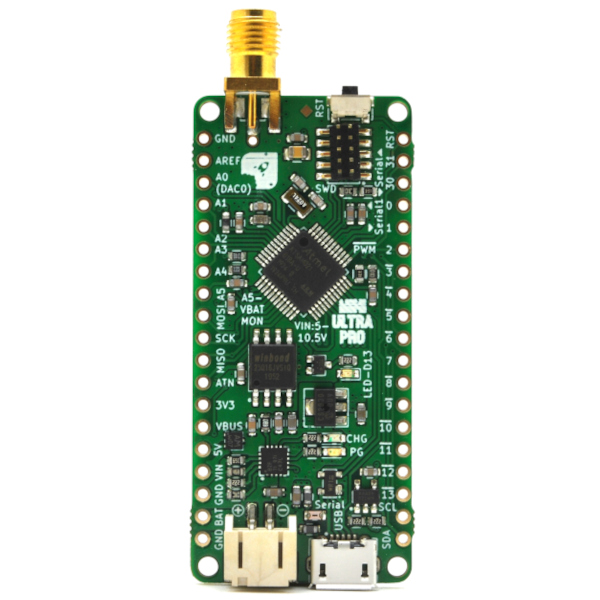
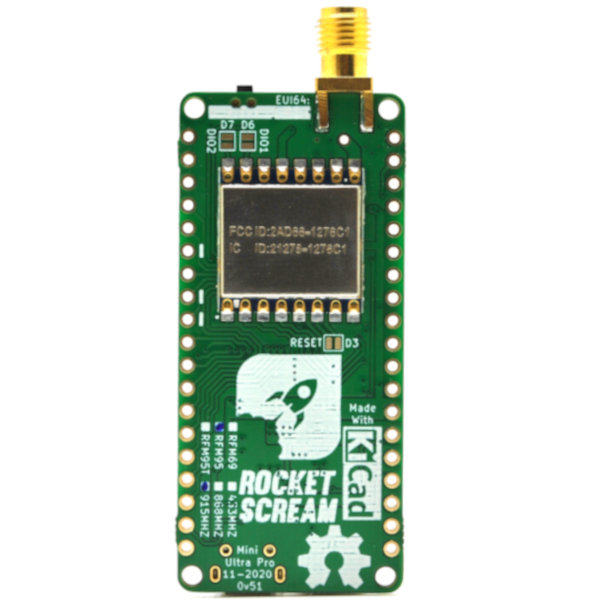
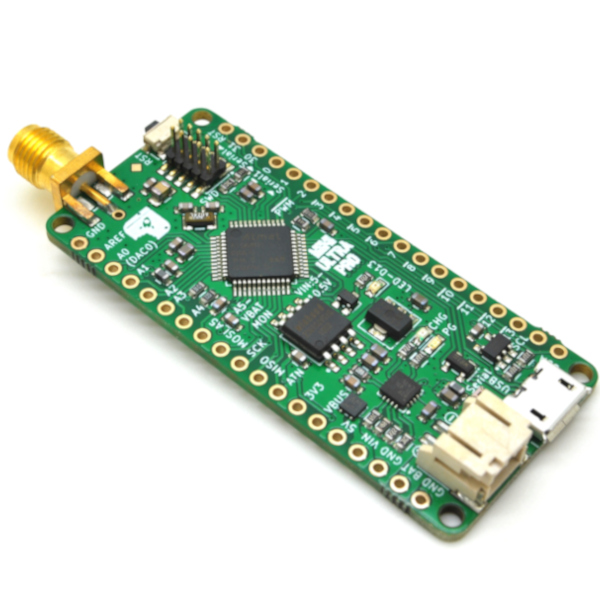
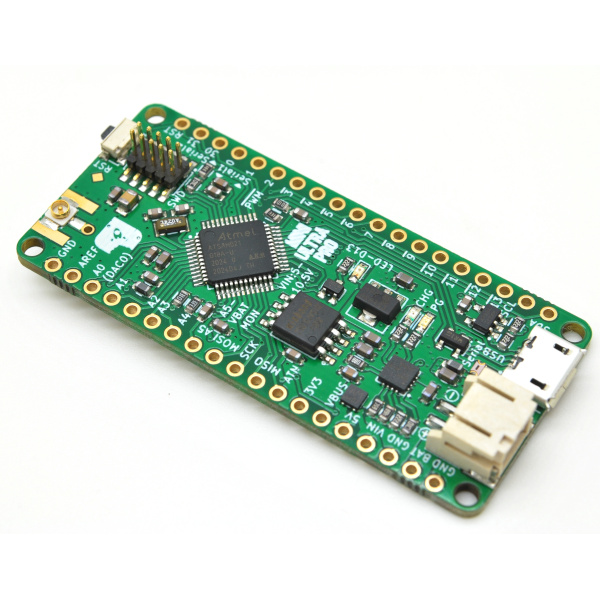
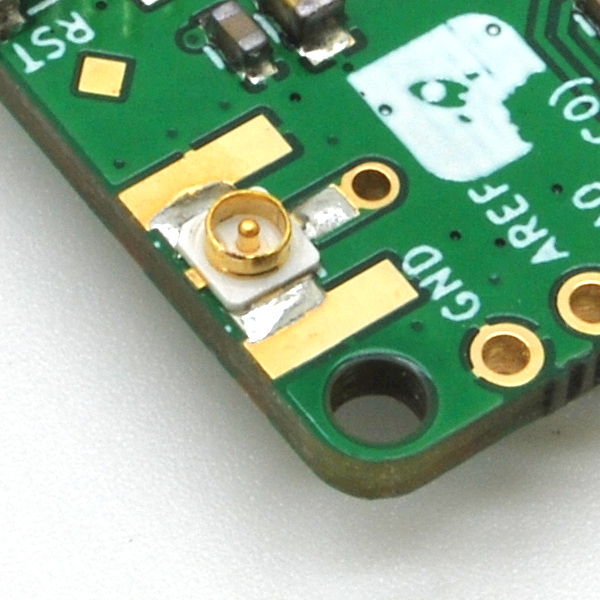
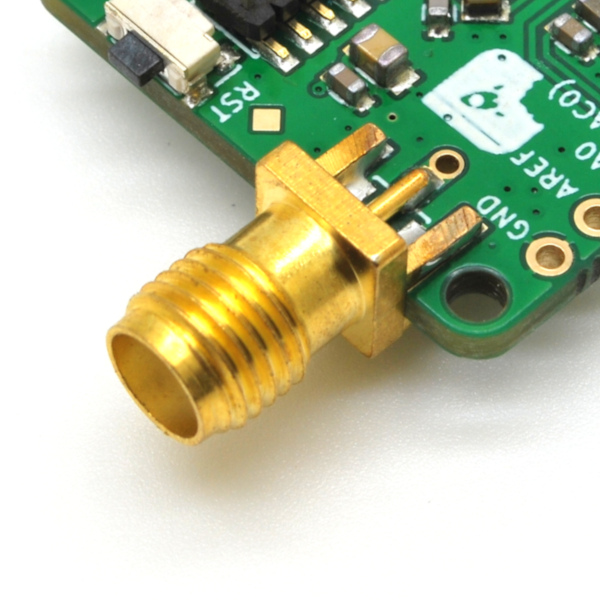
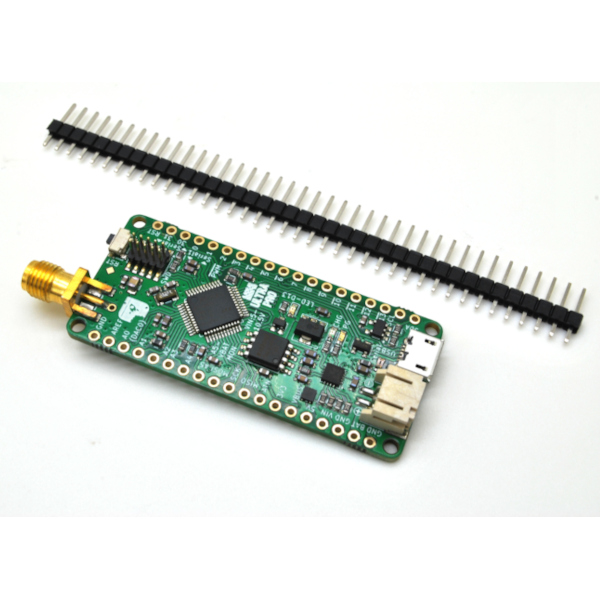
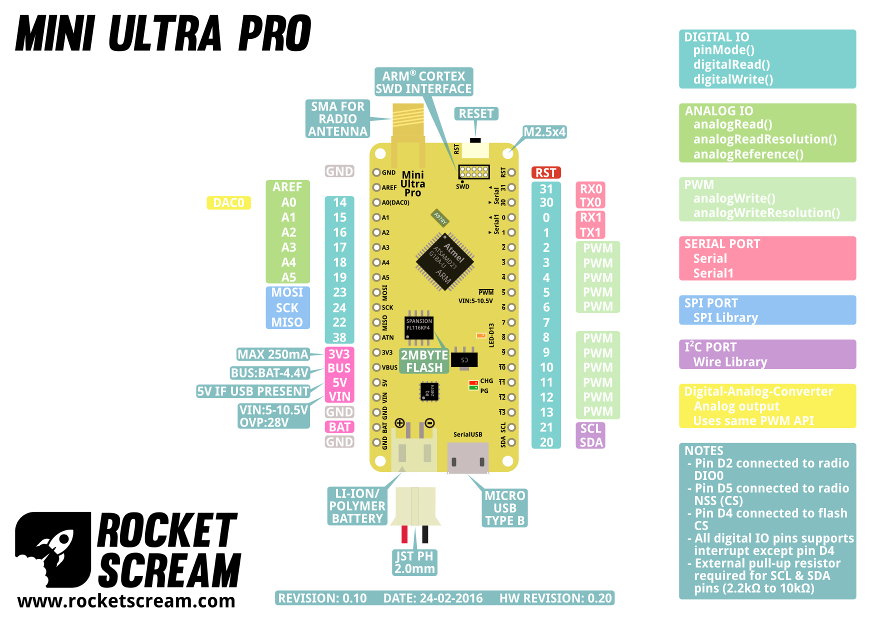
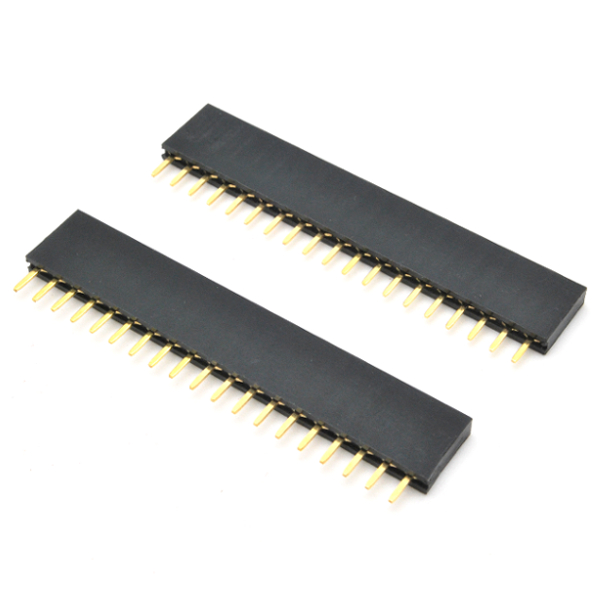
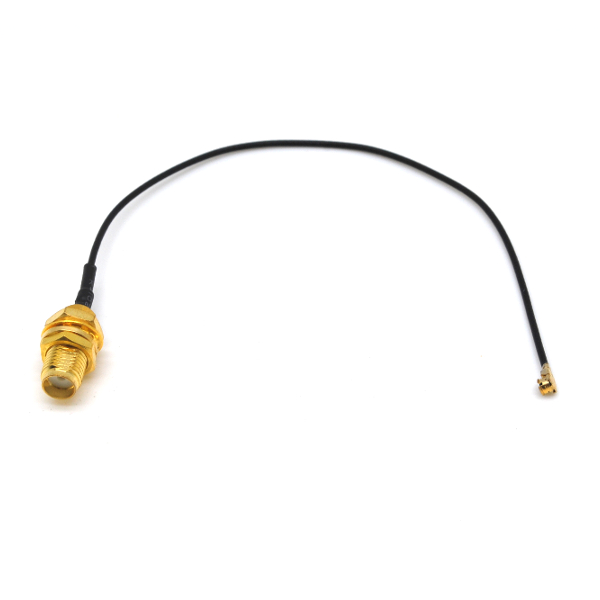
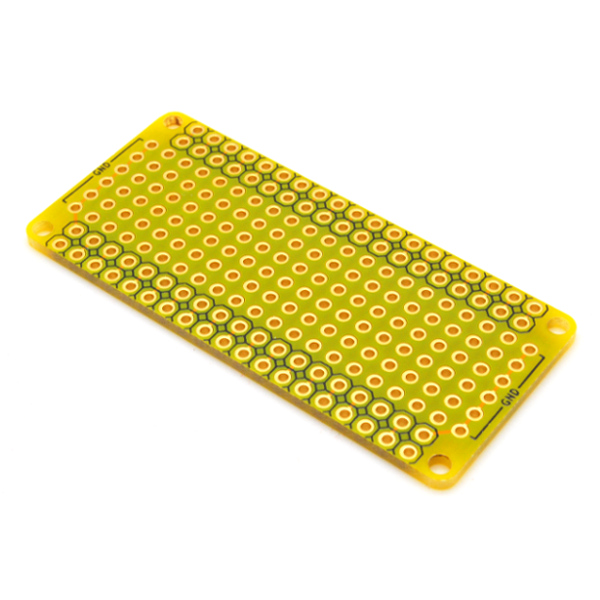
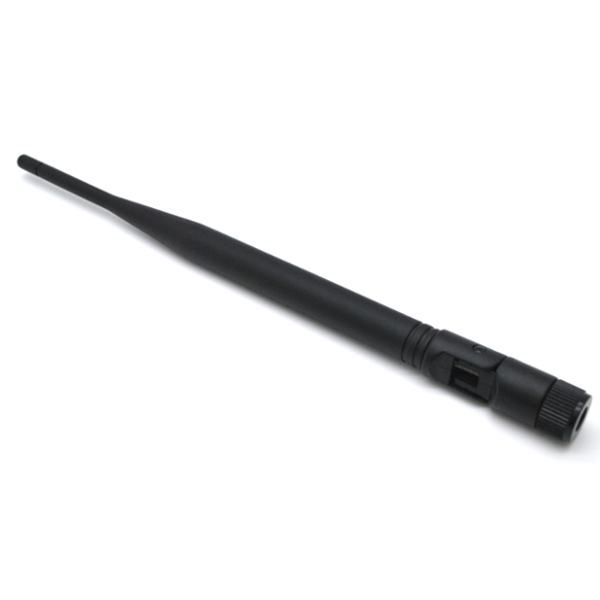
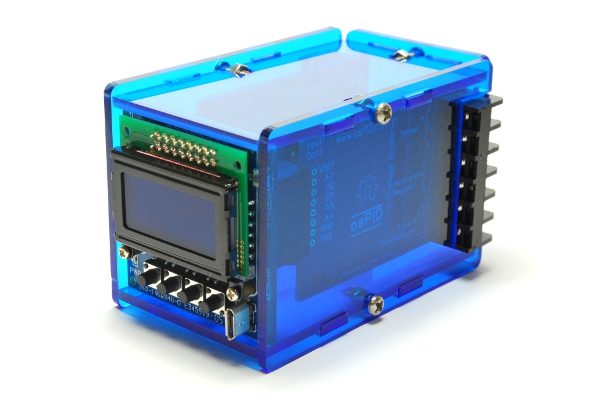

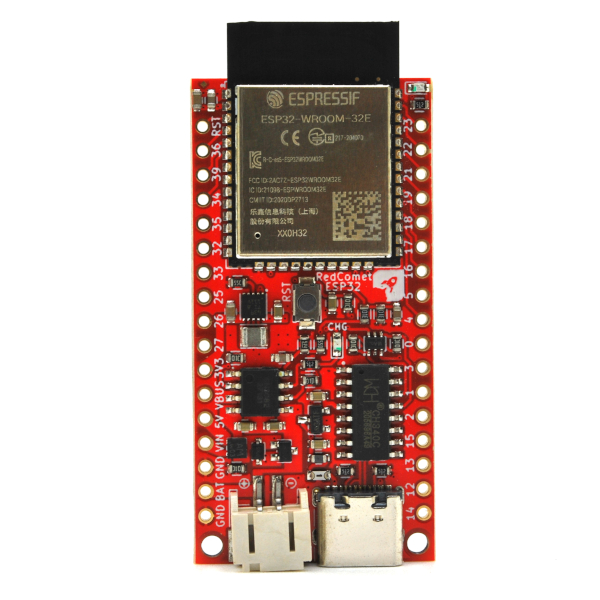
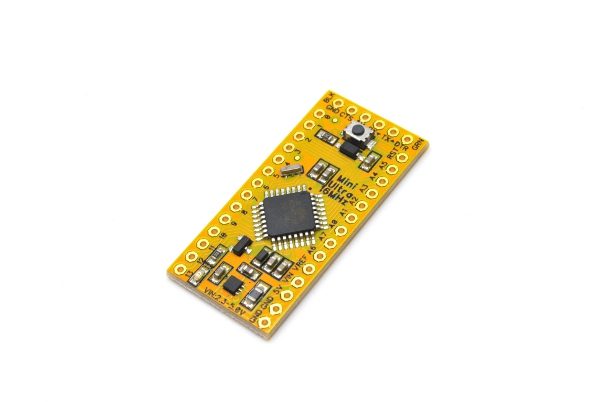







Amir Nathoo (verified owner) –
This is a fantastic product. Really high quality build. I have been using the Mini Ultra Pro V3 to achieve ultra low power monitoring of environment conditions and other LoRa projects and both hardware and software have been very reliable.
I love the great support Rocket Scream provides and overall outstanding communication/response.
Michael N (verified owner) –
This product is awesome and deserves a thorough review given how few exist. I have had this product for few months and now feel confident to write a review.
Delivery & Packing, 5/5: Ordered on a weekend and selected Fedex (middle tier) and it arrived in Colorado (USA) in 4 business days. Item arrived in anti static ziplocs, bubble wrapped in a small box, and in a padded Fedex bag. All items I ordered arrived with no issues.
Initial Setup, 5/5: Tested example code on this page using Arduino IDE. Be sure to follow instructions on what needs to be soldered for the Lora chip to work and be aware of the serial detach command, pays to add a few second in there to help you upload another sketch. I recorded 17uA in deep sleep with my cheap multimeter when powering the device directly to the 3v3 pins.
Lora Integration & Hardware, 5/5: Connecting to TTN was a breeze with OTAA, again using the code on this site. The shield is FCC certified. Using 5dbi dipole antennas for both the RAK/Raspi Gateway and this device I achieved 3.5mi/5.6km range east to west across downtown Denver (although I was strategic in ensuring that I had no topography between node & gateway). I have operated the board & LiFePO4 battery down to -15F (-26C) without issue. I’d like to find some example code that uses the onboard memory, however at this juncture I dont need it for my use case.
Customer Service, 5/5: The owner monitors the forum and answers emails very quickly. He runs a tight shop and appears to look after his loyal following of customers. I have reached out several times to confirm details. Its a company you want to support!
Really glad I found this board. Ideal for prototyping and developing an industrial Lorawan product.
AC (verified owner) –
I’ve used this board in a project for environmental monitoring and have explored almost every aspect of it’s design and capabilities.
From a hardware point of view it can’t be faulted, I haven’t had any issues at all that are show stoppers.
Most of the software I’ve used has come from Arduino or other sources, and with some tweaking I’ve customised things to work as I need.
The level of documentation provided is also excellent allowing me to modify things as needed. For example I’ve changed some of the charge controller settings to allow for larger batteries and charge currents.
My application requires low power and ultra reliability with devices running off solar for years and this is the board that has come in at the right price point and delivered in every aspect. My only concern is that it could be retired one day!
LIM PHANG MOH –
We are actually waiting for the ATSAMD21 MCU to arrive. Microchip ran out of stock for months now and our orders dated back many months back but it finally shipping today. We have many companies using this boards for years and definitely cannot retire them. In fact, a new revised version is already near completion pending some parts shortage.